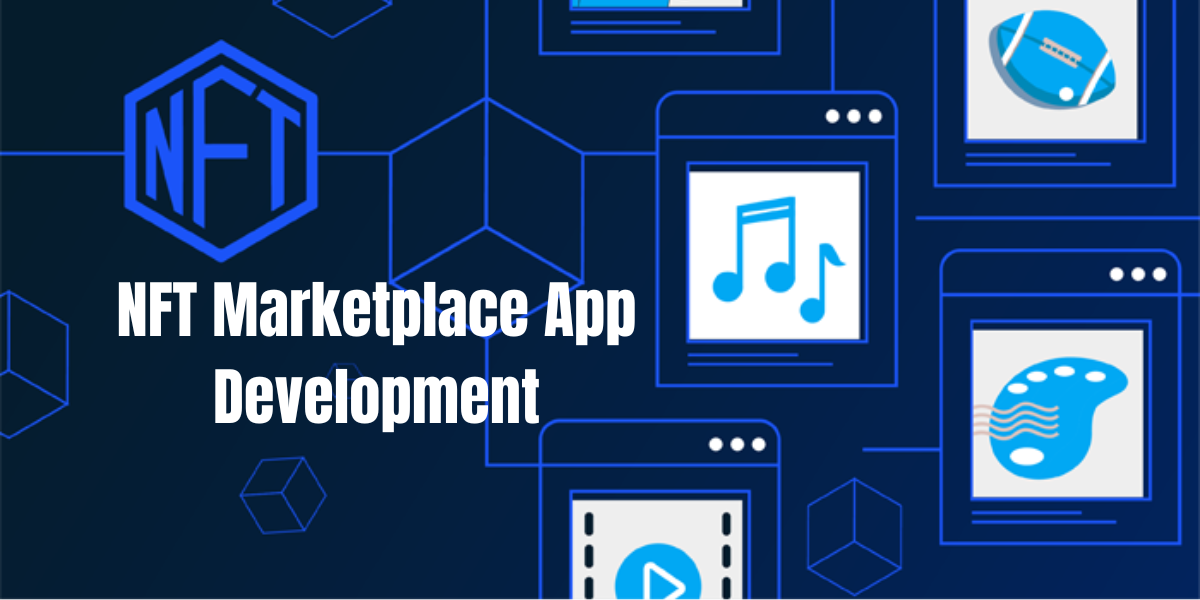In recent years, the world of digital art and collectibles has undergone a revolutionary transformation, thanks to Non-Fungible Tokens. NFTs have created a new way for artists, creators, and collectors to buy, sell, and trade digital assets securely and transparently. The NFT marketplace, a digital platform where these transactions take place, has become a lucrative business opportunity. For those looking to tap into this burgeoning industry, understanding the intricacies of NFT marketplace app development is essential.
The Journey From Concept to Creation of an NFT Marketplace App Sheds Light on the Key Steps Involved in Its Development:
Conceptualization and Market Research
Every successful project begins with a clear concept and thorough market research. When conceptualizing your NFT marketplace app, consider the following:
a. Target Audience: Identify your target audience, whether it's artists, collectors, or investors.
b. Unique Selling Proposition (USP): Determine what sets your NFT marketplace apart from existing platforms.
c. Monetization Strategy: Explore revenue streams such as transaction fees, listing fees, and premium features.
d. Legal and Compliance Considerations: Understand the regulatory landscape in your region regarding NFTs and cryptocurrencies.
Technology Stack
Choosing the right technology stack is crucial for NFT marketplace app development. You'll need a blockchain network to support your NFT transactions. Ethereum, Binance Smart Chain, and Flow are popular choices. Additionally, you'll require a backend framework (e.g., Node.js, Ruby on Rails) and frontend technologies (e.g., React, Angular) for app development.
Smart Contract Development
The heart of any NFT marketplace is its smart contract, which defines the rules governing NFT creation, ownership, and transfer. You may need to hire blockchain developers with expertise in Solidity (for Ethereum) or other relevant programming languages. Ensure rigorous testing to eliminate vulnerabilities and security risks.
User Authentication and Onboarding
Creating a seamless user experience is critical. Implement user authentication and onboarding processes that are both secure and user-friendly. Options like email, social media, and two-factor authentication can be integrated.
NFT Minting and Listings
Allow users to mint their NFTs by uploading digital content (e.g., images, videos, music) and defining attributes like rarity and edition. Ensure efficient storage and retrieval of NFT metadata, often stored on decentralized file storage systems like IPFS.
Wallet Integration
Integrate cryptocurrency wallets to enable users to store and manage their NFTs. Wallet options may include MetaMask, Trust Wallet, or custom wallets. Ensure compatibility with your chosen blockchain network.
Marketplace Features
Build a feature-rich marketplace with capabilities such as:
a. Search and Discovery: Users should easily find NFTs by categories, artists, or keywords.
b. Auctions and Bidding: Implement auction-style listings with bidding functionality.
c. Instant Purchase: Allow for immediate NFT purchases at a fixed price.
d. Notifications: Notify users of auction updates, successful bids, and new listings.
e. User Profiles: Enable users to create and customize their profiles, showcasing their NFT collections.
f. Payment Processing: Facilitate cryptocurrency payments and transactions securely.
Security and Compliance
NFT marketplaces are attractive targets for cyberattacks. Implement robust security measures, including encryption, DDoS protection, and regular security audits. Stay compliant with relevant regulations, such as Know Your Customer (KYC) and Anti-Money Laundering (AML) procedures.
Testing and Quality Assurance
Thoroughly test your NFT marketplace app to identify and resolve bugs, glitches, and performance issues. Ensure that your app functions seamlessly across different devices and browsers.
Beta Testing and User Feedback
Before the official launch, conduct beta testing with a select group of users. Gather feedback to make necessary improvements and refinements to the app's functionality and user interface.
Deployment and Scaling
When deploying your NFT marketplace, consider scalability to accommodate a growing user base. Opt for cloud hosting services like AWS, Azure, or Google Cloud to ensure reliability and scalability.
Marketing and Promotion
Once your NFT marketplace is live, invest in marketing and promotion to attract users and artists. Leverage social media, influencers, and partnerships to create buzz around your platform.
Community Building
Foster a vibrant community around your NFT marketplace. Engage with users through forums, social media, and events. Encourage collaboration between artists and collectors.
Continuous Development and Updates
Stay agile and responsive to user feedback and market trends. Continuously improve your app by adding new features, enhancing security, and addressing user concerns.
Conclusion
NFT marketplace app development is a multifaceted journey that demands careful planning, technical expertise, and a deep understanding of the NFT ecosystem. From conceptualization to deployment, every step requires meticulous attention to detail and a commitment to creating a secure and user-friendly platform. In the ever-evolving NFT landscape, staying adaptable and responsive to the evolving needs of your user community will be the cornerstone of long-term success in the NFT marketplace development industry.





Comments